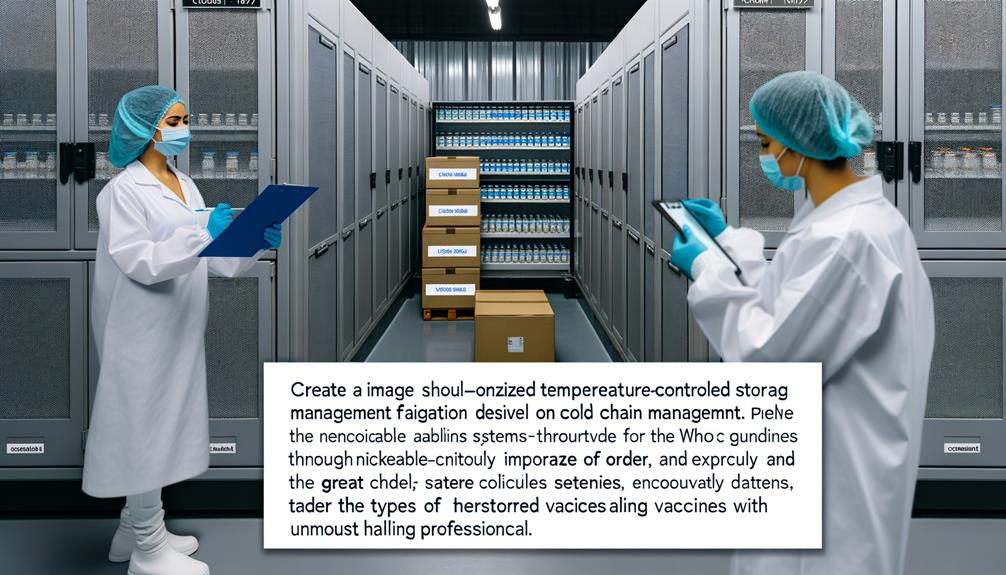As a pharmaceutical industry professional, I’ve witnessed the rising pressure to navigate ever-changing regulations. Compliance in the pharmaceutical supply chain is now crucial for ensuring patient safety and product integrity.
In this article, we’ll explore how compliance is revolutionizing the industry. With the upcoming deadline for the Drug Supply Chain Security Act (DSCSA), companies face challenges and opportunities to transform their supply chains.
Join me as we unveil the transformative power of compliance in revolutionizing pharmaceutical supply chains.
Compliance Requirements in Pharmaceutical Supply Chains
As a pharmaceutical supply chain participant, I’m fully aware of the compliance requirements that govern our industry. Compliance technology and staying updated with regulatory changes are crucial to ensuring the integrity and safety of pharmaceutical products in the supply chain.
The Drug Supply Chain Security Act (DSCSA) is a critical regulation that mandates the tracking of prescription drugs. It reshapes the pharmaceutical supply chain in the United States and requires traceability and tracking of pharmaceutical products. With the compliance deadline set for November 27, 2023, companies are facing challenges in adapting to new systems and processes.
However, this presents an opportunity to invest in track and trace solutions, improving efficiency and bolstering consumer trust. Compliance is the backbone of the supply chain, securing pharmaceutical supply chains and protecting patient safety.
The Role of DSCSA in Supply Chain Transformation
Moving forward in the discussion about the impact of the Drug Supply Chain Security Act (DSCSA) on the pharmaceutical supply chain, the role it plays in transforming the supply chain is significant.
The DSCSA drives the adoption of technology solutions and ensures supply chain transparency.
- Implementing technology solutions: The DSCSA mandates the use of serialization and track-and-trace technology, enabling the tracking and tracing of pharmaceutical products throughout the supply chain. This implementation improves visibility and accountability, reducing the risk of counterfeit drugs and enhancing patient safety.
- Ensuring supply chain transparency: The DSCSA requires the exchange of information and documentation between supply chain participants, promoting transparency and collaboration. This transparency helps identify and address vulnerabilities in the supply chain, strengthening overall integrity and trust.
Understanding the Pharmaceutical Supply Chain Process
Now let’s delve into the pharmaceutical supply chain process and its crucial components. Understanding the key stages in the pharmaceutical supply chain and the participants involved is essential for ensuring compliance and patient safety.
The supply chain participants include drug manufacturers, packaging companies, wholesale distributors, healthcare providers, and pharmacists.
The process begins with sourcing raw materials, which are then prepared for pharmaceutical manufacturing.
The next stage involves the actual manufacturing of pharmaceuticals under strict Good Manufacturing Practice (GMP) standards.
After manufacturing, wholesale distributors handle the distribution of medications.
Finally, healthcare providers and pharmacists play a vital role in delivering the correct medications to patients.
Key Players in the Pharmaceutical Supply Chain
To continue our exploration of the pharmaceutical supply chain process, let’s shift our focus to the key players involved in ensuring compliance and patient safety. These players play a vital role in maintaining the integrity and accountability of the pharmaceutical supply chain.
Here are the key players:
- Drug Manufacturers: Responsible for producing pharmaceutical products, they must adhere to Good Manufacturing Practices (GMPs) to ensure product quality and compliance.
- Packaging Companies: Ensure proper packaging and labeling of medications, contributing to patient safety and regulatory compliance.
- Wholesale Distributors: Handle the distribution of pharmaceutical products, ensuring that medications reach healthcare providers and pharmacists in a timely and compliant manner.
Collaboration opportunities among these players can lead to supply chain optimization, improved efficiency, and enhanced patient safety. By working together, they can identify and address compliance challenges, adopt innovative technologies, and strengthen the integrity of the pharmaceutical supply chain.
The Impact of DSCSA on the Industry
The industry’s adoption of DSCSA has revolutionized the pharmaceutical supply chain. However, this adoption hasn’t come without its challenges. DSCSA implementation has presented pharmaceutical companies with a range of challenges, such as the need for new systems and processes to ensure compliance. Companies are now faced with the task of investing in technology solutions that can help them navigate these compliance requirements effectively.
One of the key technology solutions for DSCSA compliance is track and trace systems. These systems enable pharmaceutical companies to track the movement of products throughout the supply chain, ensuring traceability and accountability. By implementing track and trace technology, companies can improve the efficiency of their supply chain operations and bolster consumer trust by ensuring the integrity and safety of pharmaceutical products.
Read More:
Revolutionizing Cold Chain Operations: Mastering Efficiency
Mastering Temperature Data Logging for Optimal Performance
Cold Chain Risks: Safeguarding Global Supply Chains
Privacy Policy
Revolutionary Active Tracking Maximizes Meat Shelf-Life
Addressing Challenges and Embracing Opportunities
Improving compliance in the pharmaceutical industry requires addressing challenges and embracing opportunities for enhancing supply chain operations. To successfully navigate the complex regulatory landscape and ensure patient safety, pharmaceutical companies must invest in technology and implement best practices.
Here are three key areas that highlight the challenges and opportunities in achieving compliance:
- Investing in technology: Embracing digital solutions such as track and trace systems can improve efficiency and accuracy in tracking pharmaceutical products throughout the supply chain. This investment not only ensures compliance with regulations like the DSCSA but also enhances product safety and integrity.
- Implementing best practices: Adhering to Good Manufacturing Practices (GMPs) and Good Distribution Practices (GDPs) is crucial for maintaining compliance and minimizing risks in production. By implementing these best practices, companies can optimize their supply chain operations and uphold the highest standards of quality and safety.
- Enhancing supply chain transparency: Transparency is key to building trust with consumers and regulatory authorities. By leveraging technology and implementing robust supply chain processes, companies can enhance transparency, improve accountability, and strengthen the integrity of their pharmaceutical supply chains.
The Significance of Compliance in Pharmaceuticals
As a pharmaceutical company, compliance with regulatory requirements is of utmost importance in ensuring the integrity and safety of our supply chain. Compliance serves as the foundation for maintaining trust and protecting patient safety. By adhering to Good Manufacturing Practices (GMPs) and Good Distribution Practices (GDPs), we can ensure the quality of our products and minimize risks in production.
Compliance also plays a crucial role in securing our supply chain from counterfeit or substandard medications. To further strengthen our compliance efforts, we can invest in compliance training for our employees, ensuring they’re well-versed in regulatory requirements and best practices. Additionally, implementing compliance software can streamline and automate compliance processes, enhancing efficiency and accuracy.
Read More:
Ensuring Quality and Safety Through Compliance Standards
Compliance standards ensure the quality and safety of pharmaceutical products in the supply chain. Implementing these standards is crucial to address the compliance challenges faced by the pharmaceutical industry. To ensure quality and safety, companies need to develop effective implementation strategies.
Here are three key factors to consider when implementing compliance standards:
- Technology integration: Embracing innovative technologies such as track and trace solutions can enhance efficiency and bolster consumer trust. These technologies enable companies to trace the movement of pharmaceutical products throughout the supply chain, ensuring integrity and safety.
- Training and education: Providing comprehensive training programs to employees on compliance requirements and best practices is essential. This empowers them to adhere to regulatory standards and minimize risks involved in production.
- Robust quality management systems: Implementing robust quality management systems, such as Good Manufacturing Practices (GMPs) and Good Distribution Practices (GDPs), helps ensure product quality and minimize compliance risks.
The Crucial Role of Regulations in Securing Supply Chains
Regulations play a crucial role in ensuring the security of pharmaceutical supply chains. Regulatory standards, such as the Drug Supply Chain Security Act (DSCSA), are designed to promote traceability and tracking of pharmaceutical products. By implementing these standards, the industry aims to enhance product safety, integrity, and accountability.
Compliance with these regulations is essential for maintaining trust and ensuring patient safety. Good Manufacturing Practices (GMPs) and Good Distribution Practices (GDPs) are key components of compliance, as they ensure product quality and minimize risks involved in production.
The pharmaceutical supply chain relies on regulations and compliance to secure the flow of medications and protect patients from counterfeit or substandard drugs. The industry must navigate evolving regulatory landscapes effectively to uphold supply chain security and ultimately safeguard patient well-being.



